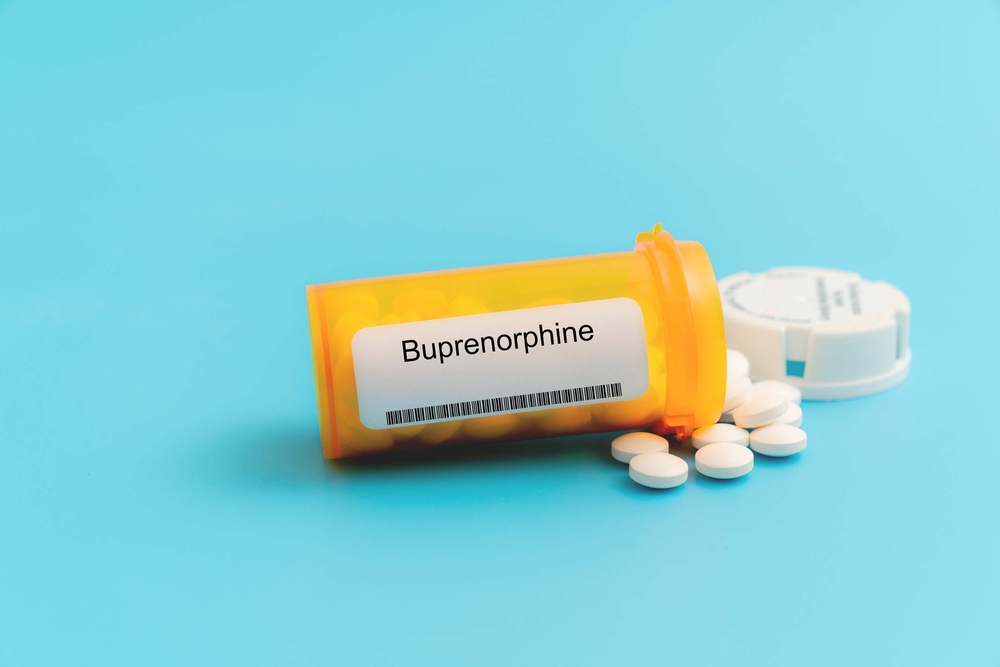Last Updated:
August 19th, 2025
Buprenorphine Rehab Treatment | What to Expect
Buprenorphine is meant to help people get off opioids but sometimes, buprenorphine addiction can replace the original addiction. That can be heartbreaking, especially if you were trying your best to get clean. If you’re now feeling stuck on the thing that was supposed to help, buprenorphine addiction treatment can take a close look at what went wrong. This may be some issue that went unresolved during rehab, a lack of medical oversight during opioid replacement therapy or something more hidden. This will help you build on all your previous progress, giving you the best chance of permanent recovery.

What is buprenorphine addiction treatment?
Buprenorphine addiction treatment is like a journey with three big stops. Without each of them, recovery is incomplete and a relapse sadly becomes more and more likely:
- Buprenorphine detox has to go really slowly. If you started taking buprenorphine to come off another opioid, then your body has already been through withdrawal before and going too fast now can be risky. You will be helped by a medical team who will taper your dose very gradually to keep you as safe as possible.
- In buprenorphine rehab, you will receive therapy for everything that happened before buprenorphine addiction and has happened since. Some of this may be complicated but rehab therapy will help you understand how you ended up here and what you need to do differently
- Aftercare provides ongoing resources and support. It is particularly important if you have already been through opioid addiction treatment but have relapsed as it shows something wasn’t quite right last time.
How to tell if you need buprenorphine addiction treatment?
As buprenorphine is supposed to be a treatment itself, it can be hard to know if something has gone wrong. However, if you’ve asked yourself any of these, it might be worth getting help:
- Are you behaving the same as you did when you were addicted to another opioid?
- Have you lied to anyone about how much or how often you’re using buprenorphine?
- Do you feel like buprenorphine is harming you but you’re scared of returning to other drugs?
- Are you trying to convince your friends and family you’re fine but you don’t feel fine?
- Should you have reduced your buprenorphine dose by now but you are refusing to or lying to your doctor?
If you see yourself in any of this, here is how buprenorphine addiction treatment can help you:
Struggling with an addiction? If you are ready to seek help, reach out to us today, and a member of our compassionate team will help you find the best option for starting your recovery journey.
Step one: Buprenorphine detox
Coming off buprenorphine is different from other detoxes. You were probably given it to help stop another addiction so your team will need to take all of that into account. This will include past opioid use, how long you have been on buprenorphine and your overall health. Then they will help you taper down slowly, possibly with other replacement medicines if needed.
Buprenorphine stays in your system longer than other drugs, which is a big part of why it’s used in opioid replacement therapy. However, this also means that buprenorphine detox can take a long time. Don’t worry because you will be monitored closely for as long as it takes for your systems to reset and find balance again.
Buprenorphine withdrawal timeline and detox symptoms
Coming off buprenorphine, especially if it was part of opioid treatment, can feel really complicated. It is a long-acting drug so buprenorphine withdrawal symptoms don’t usually hit right away. For most people, the first signs start around 24 to 72 hours after the last dose. The worst of it tends to last about 10 days, but some symptoms, especially cravings and a generally low mood, can persist for a month or more.
How long the buprenorphine detox timeline takes really depends on your dose, how long you’ve been on it and whether you transition well to another opioid. Exact buprenorphine withdrawal symptoms can also vary but may include:
- Muscle aches
- Bone-deep tiredness
- Chills, fever or sweating
- Stomach issues
- Persistent headaches
- Trouble sleeping
- Feeling jittery, irritable or overwhelmed
More serious buprenorphine withdrawal symptoms can mimic those of other opioids and include:
- Depression, especially in the second or third week
- Mood swings
- Feeling spaced out
- Intense cravings
- Diarrhoea
- Rapid heartbeat or high blood pressure
Don’t worry if these symptoms sound a bit frightening. If anything starts to go wrong, your detox team will know exactly how to look after you.
Step two: Buprenorphine rehab
Now that detox is over, buprenorphine rehab is where the deeper stuff begins. As your story includes buprenorphine, chances are you have already been through a lot but rehab will help you better understand it all. If you’re planning to stay in the same place for both rehab and detox, that is usually the best way as you won’t have to deal with packing up or meeting new people all over again.
Buprenorphine rehab gives you a safe place to talk about how things have gone off track. Maybe the buprenorphine was working at first and then the lines started to blur. That doesn’t mean you failed, it just means something went unaddressed the first time round.
Your therapists understand how easy it is to fall into a cycle even when you’re trying to fix something. Buprenorphine rehab gives you the chance to break that cycle so this time, the changes are lasting ones.
What to expect from buprenorphine rehab
What happens in buprenorphine rehab depends on where you go for treatment but there are a few proven therapies that can really help:
- Individual therapy, where you get your own private space to talk to a professional therapist
- Group sessions where everyone’s got their own thing going on but can share similar stories and advice
- CBT to understand how your thoughts and drug use are connected and to learn a few new ways to deal with life’s hardships
- Family support therapy to open up conversations that have never happened before
- Motivational interviewing, where you decide who you want to be and use it as fuel for recovery
- Holistic therapies for when your brain needs a break, including meditation, art and yoga
Step three: Aftercare and buprenorphine relapse prevention
Buprenorphine rehab helps get your head clear but aftercare is what helps you hold onto that clarity when life kicks back in. The best treatment programmes offer three important resources to help with the transition:
Find buprenorphine addiction treatment today
If you are worried about buprenorphine, Addiction Helper is here to listen. We are connected with some of the best buprenorphine addiction treatment centres and can talk you through everything that is available. Reach out to us today for free, friendly advice.
Our compassionate team are ready and available to take your call, and guide you towards lasting the lasting addiction recovery you deserve.
Frequently Asked Questions
(Click here to see works cited)
- Recovery Lighthouse. “Buprenorphine Addiction Treatment | Buprenorphine Rehab & Detox.” Recovery Lighthouse, 12 February 2025, https://www.recoverylighthouse.com/rehab-treatment/prescription-drug/opiate/buprenorphine/. Accessed 18 June 2025.
- Smith, Danny. “Buprenorphine Rehab | Detox & Addiction Treatment.” Oasis Runcorn, 3 March 2025, https://www.oasisrehab.co.uk/rehab/prescription-drug/opioid/buprenorphine-treatment/. Accessed 18 June 2025.
- UK Addiction Treatment Centres. “Buprenorphine Addiction Treatment | Buprenorphine Rehab and Detox | UKAT.” UK Addiction Treatment Centres, 28 March 2025, https://www.ukat.co.uk/rehab-treatment/drug/prescription/opiate/buprenorphine/. Accessed 18 June 2025.


